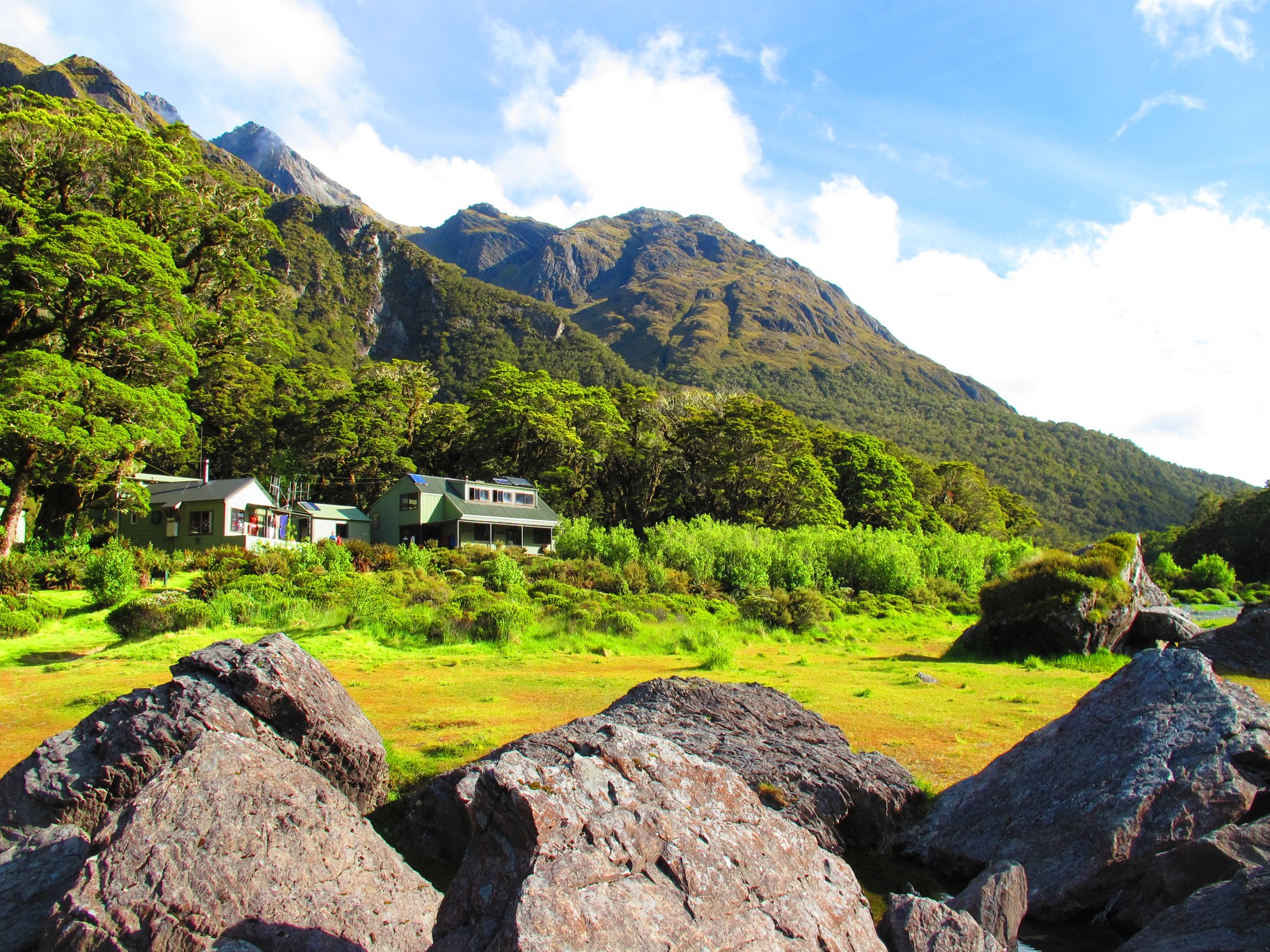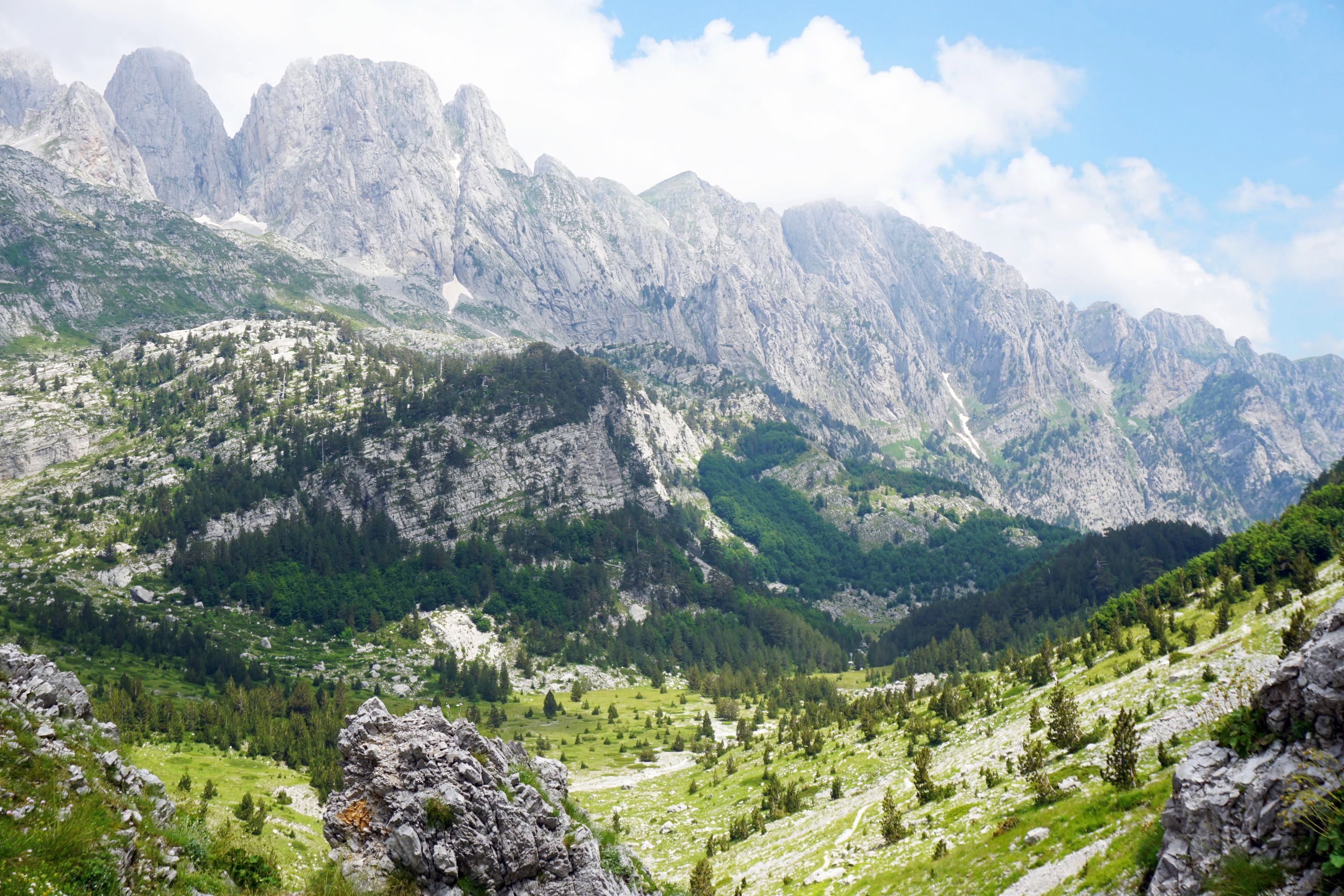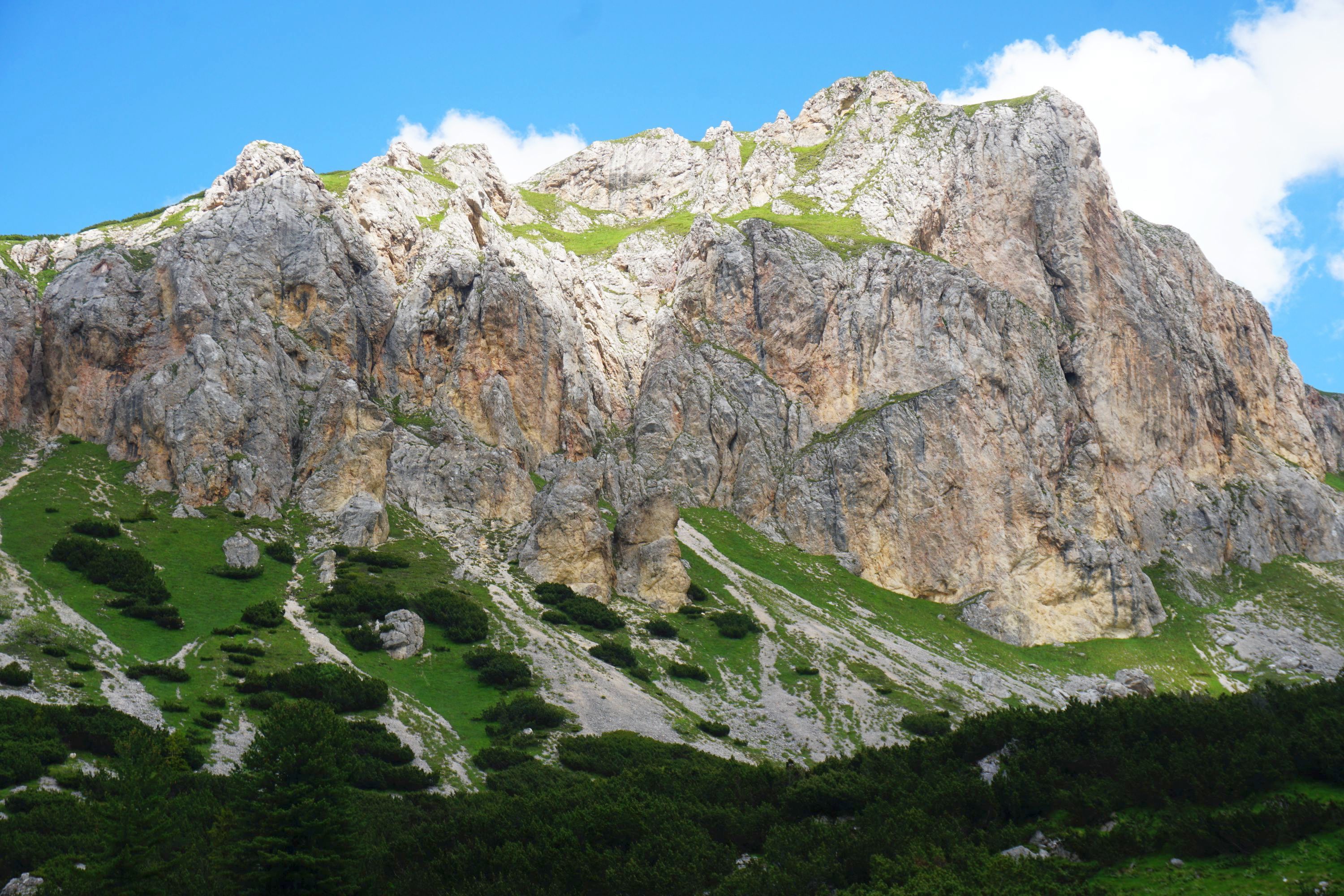One of the best things about walking in New Zealand isthe huge number of huts to stay in, usually located every 8-18km along tracks. There are around 950 maintained by DOC (Department of Conversation) plus around 1,000 privately owned ones. Many were built for hunters to control the deer population, but many specifically for hiking (known as tramping in New Zealand).
The huts remove the need to carry a tent, offer respite from the elements, and provide a comfortable place to spend the night. Unlike those in the Alps, Norway or Chile you won’t find food, showers or wi-fi, but they are comfortable and affordable. Backcountry huts are $5 a night, serviced huts $15, and Great Walk huts from $32 to $54.
A typical hut will have bunks (with mattresses for Great Walk and serviced huts), a stove for heating, an area for cooking (some of the Great Walk huts have gas cookers), water (either on tap or outside from a tank), and a toilet nearby. They vary in size from two person shelters to the eighty bunk Pinnacles Hut in the Coromandel.
Huts are often in valleys close to rivers, by the side of lakes, or high up on the hill or mountainside, often with scenic views. The most popular ones (on the Great Walks, Pinnacles, Cape Brett, Angelus, etc) must be booked in advance, which does limit flexibility on the track, but guarantees a bunk for the night. Otherwise its first come first served, but I’ve never had an issue getting a bunk for the night. Worst case you might have to sleep on the floor.
I’ve spent the night in about thirty huts now, and visited many more during the day. Here’s some tips on how to make yours (and others) stay a pleasant one.
Be considerate with noise. Huts are generally entirely wooden structures, with hard surfaces and no furnishings, so noise bounces around and amplifies. Quiet time is usually from about 9pm through to 6-7am, so if you’re staying up keep the volume down, or if you’re up early be quiet making your breakfast.
Getting things in and out of your pack tends to be noisy, so I often take my things out into the kitchen or outside the hut in order to pack. Learnt that like removing a plaster it’s best to be quick rather than prolong the process. It’s going to be noisy sorting out your pack, so just do it and get the noise over with.
Take ear plugs and an eye mask. Chances are there will be at least one snorer in the more popular huts, and people gettIng up early, so ear plugs are a must. An eye mask is particularly useful in summer as there are no curtains in huts, so it’ll get light from dawn.

Tidy up after yourself. Wipe up any spills, sweep the floor before you go, and if the stove was used then to set it up for the next people to use the hut.
Open the windows a bit if cooking with gas. To avoid any issues with fumes, best to be safe, amazing how few people do this.
Remove boots and wet gear outside, to keep the hut dry and clean. Do bring in wet gear to dry by the stove, but be careful with boots. I managed to melt the front of one pair leaving them too close to a stove. Much better to take newspaper, which rolled up inside the boots is the best way to dry them.

Don’t hog space. I confine all my gear to my bunk, and put my cooking things close together on the kitchen worktop. A full hut is a pretty confined space, just be sensible with how you use it.

Make a booking or take hut tickets. The most popular walks (Milford Track, Routeburn Track) book up many months in advance so be organised. Hut tickets can be bought from most outdoor shops. Particularly given what you’re getting for $5 or $15 there is no excuse for not paying, DOC needs all the funding it can get.

Be considerate if you snore. Where there are separate bunk rooms good manners is to take a mattress (if provided in the hut) and sleep in the kitchen. You’ll have the same sleeping experience, but everyone else will have a much better night’s sleep than if you slept in the bunk room.
Take toilet paper. Some Great Walk huts do provide but it’s good to have a backup plan.
Take all your rubbish with you, leave nothing behind.
















Leave a Reply